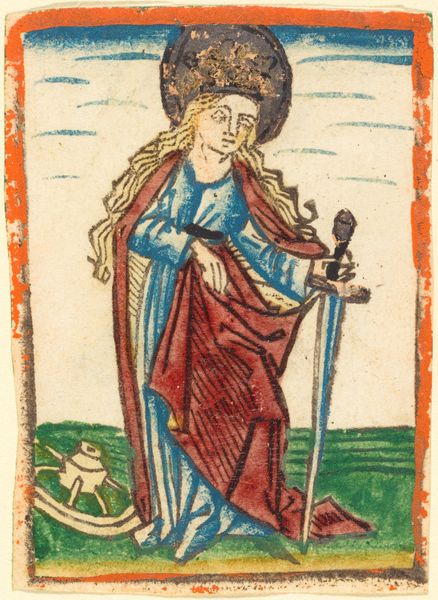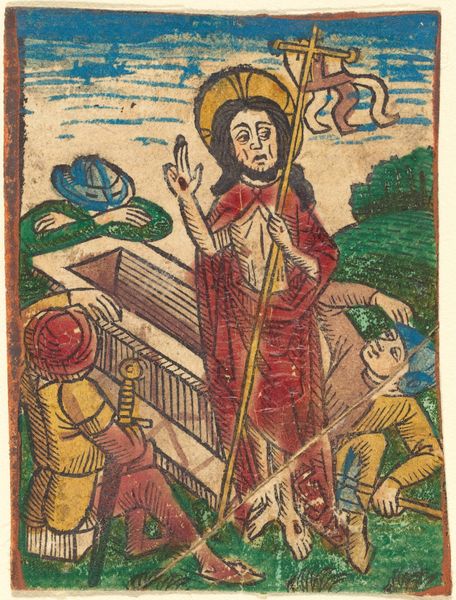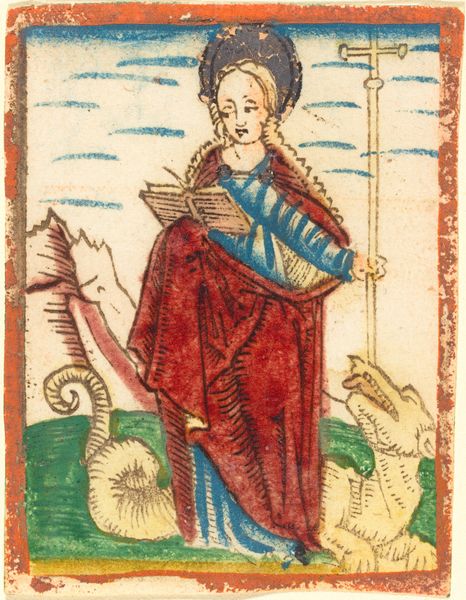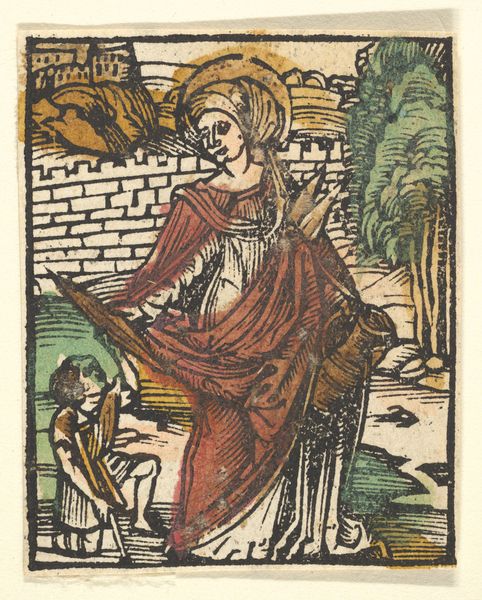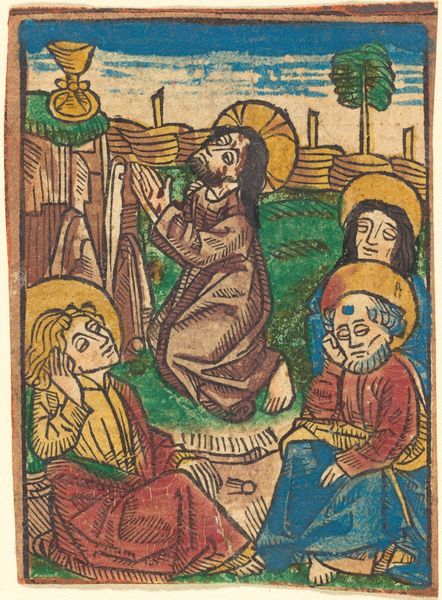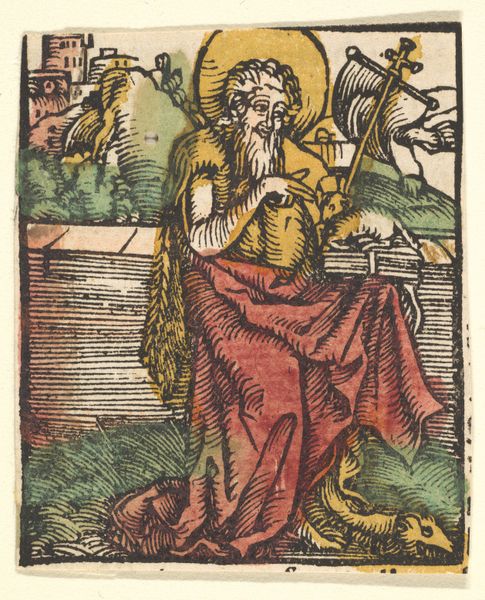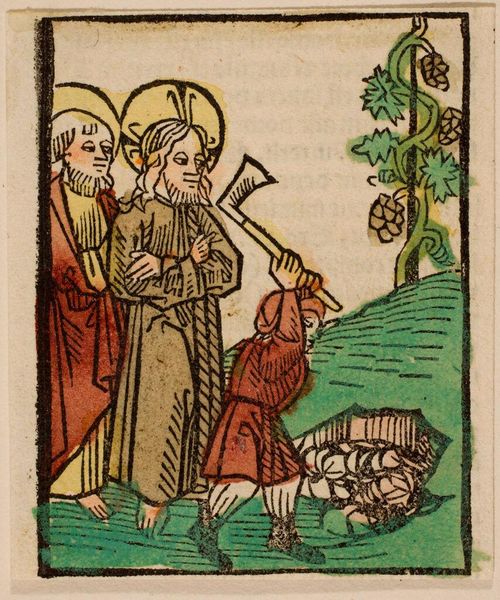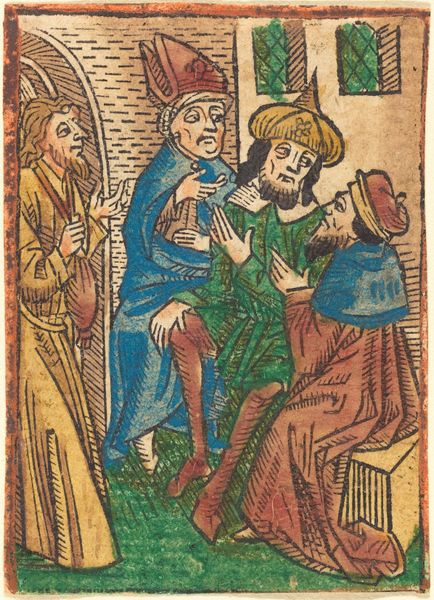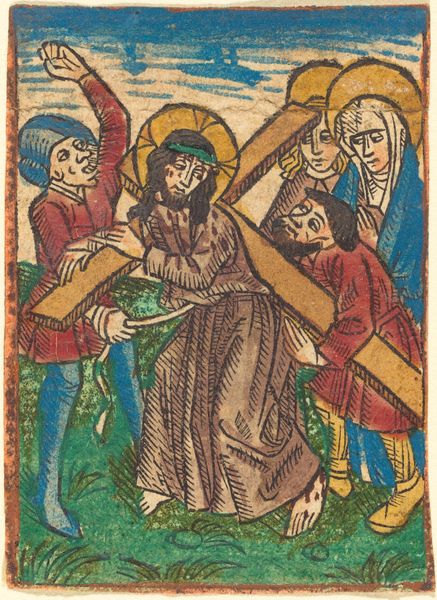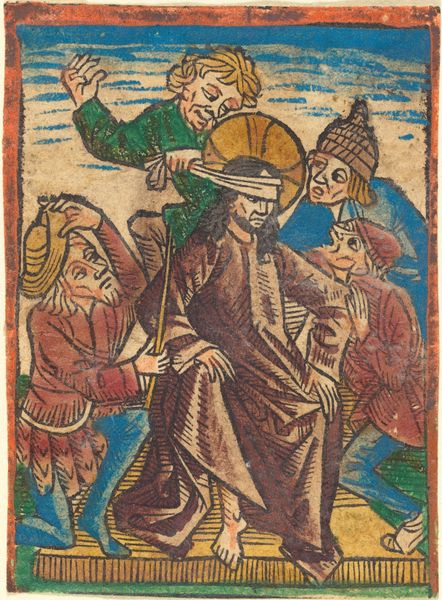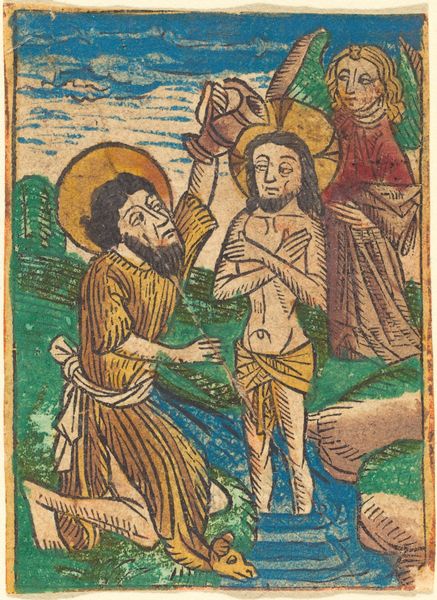
coloured-pencil, print
#
coloured-pencil
#
medieval
#
narrative-art
# print
#
figuration
#
coloured pencil
Copyright: National Gallery of Art: CC0 1.0
Curator: Immediately striking is the crudeness, or perhaps the primitiveness, of its execution. It possesses an energy—violent, almost gleeful—in its rendering of this struggle. Editor: Indeed. Let's take a look at Saint Juliana, dating from around 1460. It's crafted with colored pencil on paper, a somewhat humble medium for such a potent scene. Notice the composition. How do you see the artist navigating visual storytelling here? Curator: The spatial arrangement is interesting. Juliana dominates, nearly bursting out of the frame, while the vanquished figure—presumably a demon—is relegated to the lower left, a crumpled, defeated mass. The lines are stark, deliberately unrefined, heightening the sense of immediacy. It almost recalls manuscript illustration in its directness. Editor: I agree, the deliberate use of line is interesting. Think of the production: colored pencils involve layering, a gradual build-up of pigment through repetitive strokes. In this context, that labor becomes almost a devotional act, mirroring Juliana's own steadfastness in faith and resistance against temptation. How interesting that even a humble medium can serve such grand narratives! Curator: Consider the colour too. The restrained palette of blues, reds, and greens works in sharp contrast. Each form is neatly delineated with clear and bold outline. These choices amplify the iconographic symbolism, elevating the pictorial impact beyond mere storytelling. Editor: And notice how that palette, constrained as it is, speaks volumes about materiality and trade? The sources of these pigments, likely locally sourced minerals mixed with animal or plant-based binders, would influence availability, affecting regional artistic styles. These practical limitations inevitably shaped creative expression! Curator: That's a curious and relevant way to put the scene in the artwork into a broader context. But the essence remains her gaze. A decisive focus on an inner purpose. She stands at that liminal boundary between temporal challenge and transcendent faith. It's captured vividly through skillful reduction of form, technique, and even color. Editor: Yes. And through its accessible method and creation the narrative becomes very relatable and widely distributed and circulated in a specific devotional culture. It makes one think about how it would have served within the wider religious practices of that period! Curator: A thought-provoking insight to complement a simple yet bold presentation. Editor: Absolutely, and hopefully our analysis helps to show the complex historical context behind this print.
Comments
No comments
Be the first to comment and join the conversation on the ultimate creative platform.
